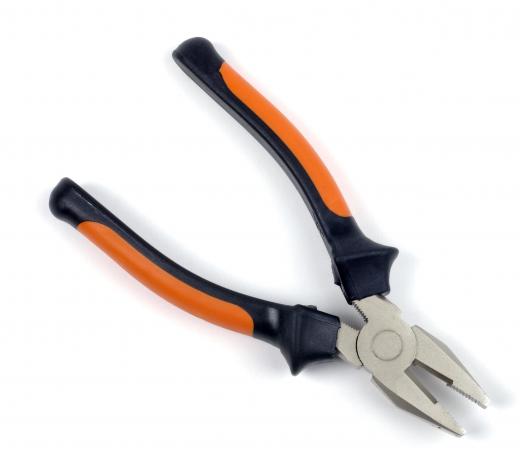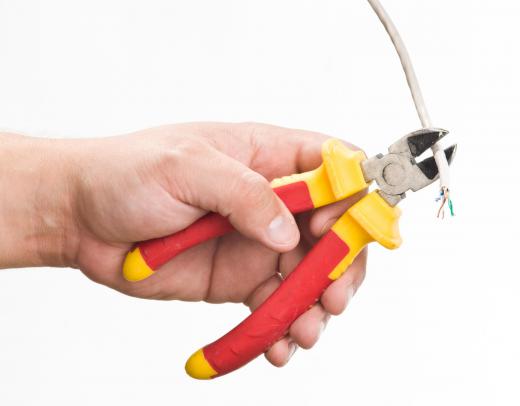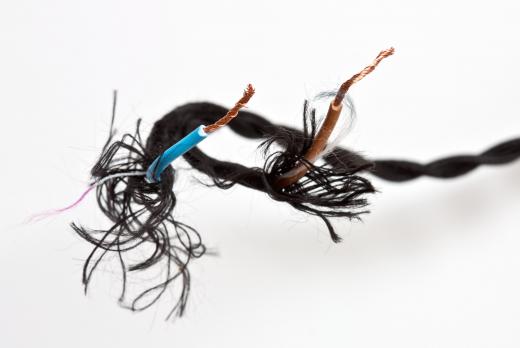Diagonal pliers are a type of pliers used to cut wire. They are specially designed to accomplish a cutting, rather than gripping or pulling, task. They consist of a pair of jaws, a fulcrum point, and a pair of handles. The handles are often dipped in colored plastic, which provides a distinctive look for identifying the tool as well as serving an insulating purpose.
The jaws are sharp and beveled to cut wire closely and effectively. The fulcrum point between the jaws and handles is placed closer to the jaws to provide the maximum mechanical advantage to the technician using the tool. Diagonal pliers are known by a number of alternate names, including dikes, diagonal side cutting pliers, and side cutters.

Pliers are a class of tool with several uses, and diagonal pliers have a relatively narrow purpose. Other types of pliers are more appropriate to grab and manipulate wires, as they feature blunt or ridged surfaces that are not intended to cut. Tradesmen like electricians will occasionally have a multiple-use pliers tool that incorporates the beveled edges of a pair of pliers alongside a gripping surface found in other types of pliers. For their specified cutting task, though, diagonal pliers are very well-suited. The metal in the jaws of a pair of diagonal pliers is usually carbon steel or another alloy with sufficient hardness to penetrate the softer conductive metals, such as copper, used in electrical wiring.

Working with wire is a precise task, necessitating the use of a tool with a compact cutting mechanism to accommodate small wire diameters, often one millimeter or less. Diagonal pliers, with their small, hard jaws, are an adequate tool for cutting tasks where a larger tool would prove to be cumbersome. The jaws on a pair of diagonal pliers can fit in small spaces where lots of different wires are in place and precisely cut just one wire, whereas a larger tool might present a difficulty in maneuvering. High-leverage diagonal cutting pliers, those with the longest handles, are useful in such small spaces because they can easily apply enough force to penetrate a wire's core and cut the wire.

It is important for users to cut wire cleanly, as sloppy cutting can create a fray. Soldering of wires also requires a clean surface to establish a solid joint. Diagonal pliers are a valuable tool for making clean cuts that allow for a proper soldering interface that does not fray.
